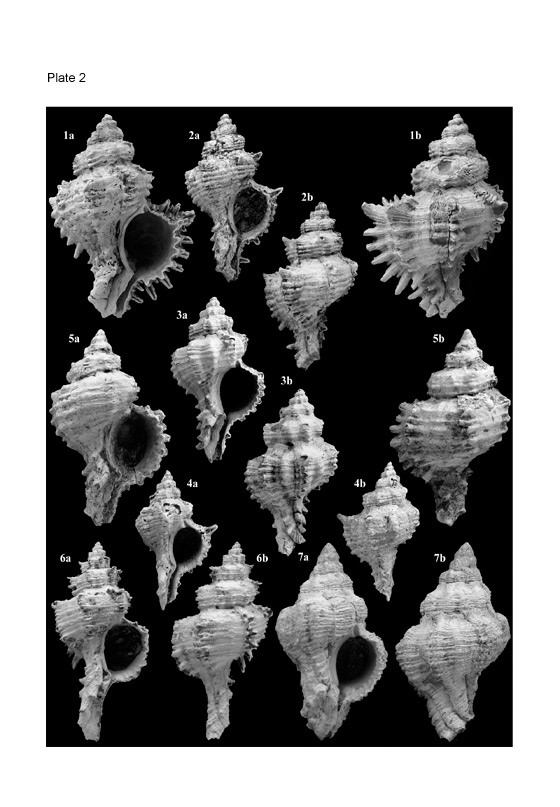
|

|
PALAEONTOS 11Price: non-members: 40 euros + postage, members: 35 euros + postage Landau B., Houart R. & Da Silva C.M., 2007, The Early Pliocene Gastropoda (Mollusca) of Estepona, Southern Spain. Part 7 – Muricidae.(87 textpages, 17 textfigures, 1 table, 15 plates)Summary: In this part of the series giving a systematic account of the Gastropoda of the Pliocene (Zanclean) deposits of Estepona, province of Málaga, Spain, the Muricidae are described and discussed. In this part the area of research has been widened to include material from two other SW Iberian Neogene basins, the Mondego Basin (western Portugal) and the Guadalquivir Basin (sowthwestern Spain). One new genus is described, Cathymorula nov gen. and three new taxa introduced, Hexaplex (Trunculariopsis) praeduplex nov. sp., Ocenebra sublavata iberopliocenica nov. subsp. and Cathymorula cathyae nov sp. Three of Bellardi’s homonyms are renamed and lectotypes designated; Purpura tuberculata Bellardi, 1882 is renamed Cathymorula bellardii nov. nom., P. bicarinata Bellardi, 1882 is renamed C. saccoi nov. nom, and P. elongata Bellardi, 1882 is renamed Purpura elongatobellardii nov. nom. Lectotypes are designated for Murex foliosus, M. gastraldii, M. trinodosus Bellardi, 1873 and several new subjective synonymies suggested; M. dujardini Tournouër, 1875 junior synonym of M. foliosus Bellardi, 1873; Pollia baccata, P. exacuta and P. affinis Bellardi, 1873 junior synonyms of Orania fusulus (Brocchi, 1814); Murex gastraldii Bellardi, 1873, M. cyclopterus Millet, 1866 junior synonyms of Purpurellus veranyi (Paulucci, 1866); Favartia incisa auct. European fossil record non Broderip, 1833 is F. suboblonga (D’Orbigny, 1852). The palaeobiogeography of the Muricidae is discussed, and the strongly thermophilic character of many of the taxa highlighted. The family suffered dramatically from the gradual climatic cooling during the Pliocene. Of the 50 species recorded, only eight (16%) survived into the Recent faunas, seven in the Mediterranean, and one, Orania fusulus (Brocchi, 1814), only at more southern latitudes, off the West African coast. |
|
ORDER INFORMATION:please contact us at: palaeontos@gmail.com |
|